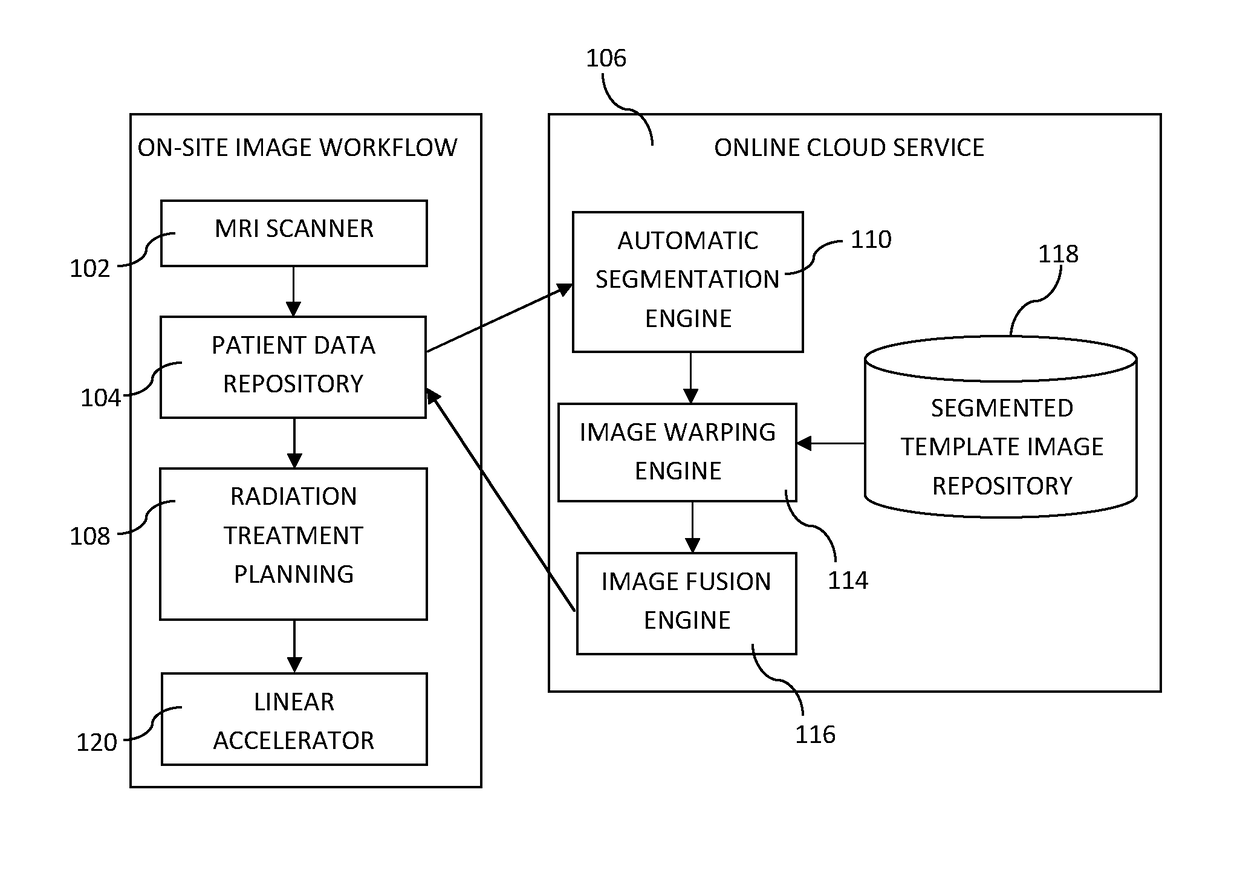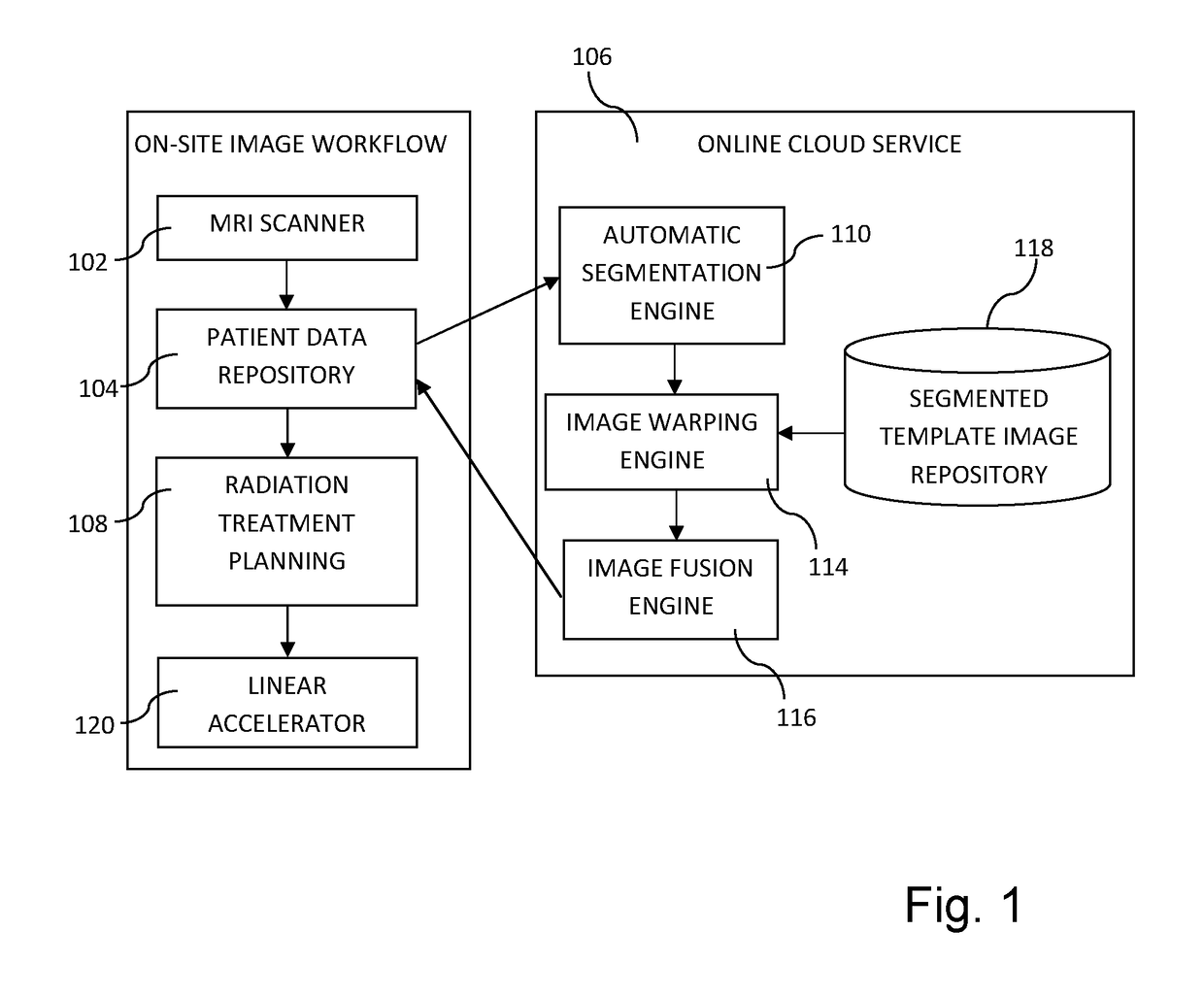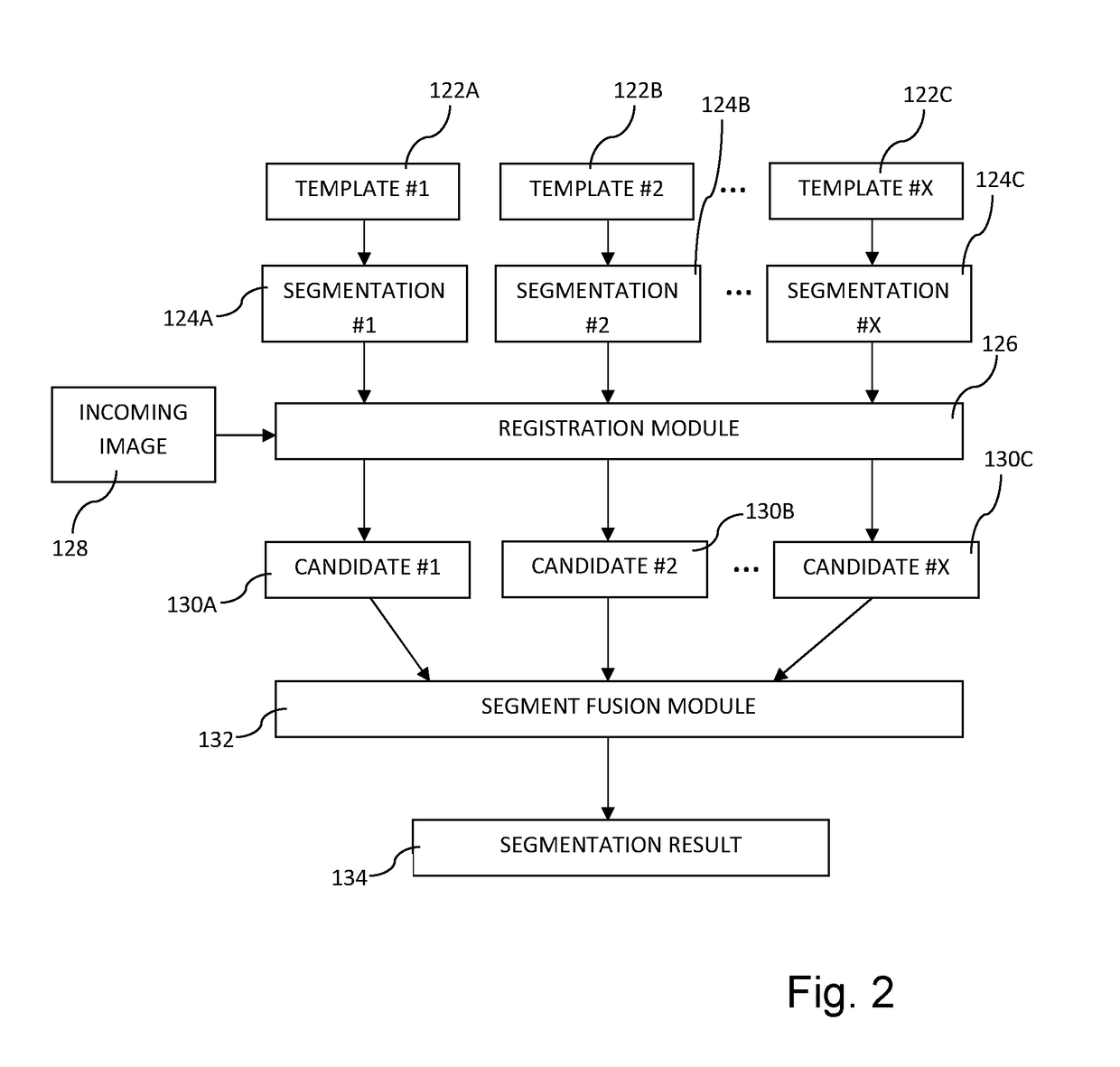Method for generating synthetic electron density information for dose calculations based on MRI
a synthetic electron density and dose calculation technology, applied in the field of generating synthetic electron density information for dose calculations based on mri, can solve the problems of low contrast, high image contrast, and limit the accuracy by which target and risk organs can be identified, and achieve the effect of reducing one, alleviating one, and eliminating on
- Summary
- Abstract
- Description
- Claims
- Application Information
AI Technical Summary
Benefits of technology
Problems solved by technology
Method used
Image
Examples
Embodiment Construction
[0067]Embodiments of the present invention relate, in general, to the field of generating synthetic electron density information. The forming of synthetic electron density information may be particularly useful for MRI based radiation treatment planning. However, it should be realized that it may be used in other applications as well. For instance, the synthetic electron density information may be used as attenuation information for a positron emission tomography (PET) camera or a single-photon emission computed tomography (SPECT) camera.
[0068]A preferred embodiment relates to generating synthetic CT image stacks for radiation dose calculation in cancer radiotherapy, such as prostate treatments, based on one or more MRI image stacks. However, it should be appreciated that the invention is as such equally applicable to radiotherapy in any other anatomical area, such as brain, head / neck, lungs, uterus, abdomen, or any other region in which radiation treatment planning is required. Lik...
PUM
 Login to View More
Login to View More Abstract
Description
Claims
Application Information
 Login to View More
Login to View More - R&D
- Intellectual Property
- Life Sciences
- Materials
- Tech Scout
- Unparalleled Data Quality
- Higher Quality Content
- 60% Fewer Hallucinations
Browse by: Latest US Patents, China's latest patents, Technical Efficacy Thesaurus, Application Domain, Technology Topic, Popular Technical Reports.
© 2025 PatSnap. All rights reserved.Legal|Privacy policy|Modern Slavery Act Transparency Statement|Sitemap|About US| Contact US: help@patsnap.com



